Low Cost Circularly Polarized Antenna for IoT Space Applications
Abstract
:1. Introduction
2. Antenna Design and Simulations
2.1. Radiating Elements
2.2. Tri-Fillar Antenna with Proposed Feeding System
3. Prototyping and Measurements
3.1. Prototype Fabrication
3.2. Antenna Measurements
4. Conclusions
Author Contributions
Funding
Acknowledgments
Conflicts of Interest
References
- Raza, U.; Kulkarni, P.; Sooriyabandara, M. Low Power Wide Area Networks: An Overview. IEEE Commun. Surv. Tutor. 2017, 19, 855–873. [Google Scholar] [CrossRef] [Green Version]
- MacGillivray, C.; Reinsel, D. Worldwide Global DataSphere IoT Device and Data Forecast; 2019–2023 (IDC # US45066919); International Data Corporation: Framingham, MA, USA, 2019. [Google Scholar]
- Sanctis, M.D.; Cianca, E.; Araniti, G.; Bisio, I.; Prasad, R. Satellite Communications Supporting Internet of Remote Things. IEEE Internet Things J. 2016, 3, 113–123. [Google Scholar] [CrossRef]
- Gao, S.; Rahmat-Samii, Y.; Hodges, R.E.; Yang, X. Advanced Antennas for Small Satellites. Proc. IEEE 2018, 106, 391–403. [Google Scholar] [CrossRef] [Green Version]
- Wong, H.; Luk, K.; Chan, C.H.; Xue, Q.; So, K.K.; Lai, H.W. Small Antennas in Wireless Communications. Proc. IEEE 2012, 100, 2109–2121. [Google Scholar] [CrossRef]
- Sze, J.; Pan, S. Design of CPW-Fed Circularly Polarized Slot Antenna With a Miniature Configuration. IEEE Antennas Wirel. Propag. Lett. 2011, 10, 1465–1468. [Google Scholar] [CrossRef]
- Arnaud, E.; Huitema, L.; Chantalat, R.; Bellion, A.; Monediere, T. Miniaturization of a circular polarized antenna using ferrite materials. In Proceedings of the 12th European Conference on Antennas and Propagation (EuCAP 2018), London, UK, 9–13 April 2018; pp. 1–5. [Google Scholar]
- Balanis, C.A.; Birtcher, C.R. Antenna Measurements. In Modern Antenna Handbook; Wiley: Hoboken, NJ, USA, 2008; pp. 977–1033. [Google Scholar]
- Chen, C.; Sim, C.; Chen, H.; Lin, Y.; Wang, Y. A new compact folded patch GPS antenna using meander line. In Proceedings of the 2015 IEEE International Symposium on Antennas and Propagation and USNC/URSI National Radio Science Meeting, Vancouver, BC, Canada, 19–24 July 2015; pp. 2441–2442. [Google Scholar]
- Ferrero, F.; Luxey, C.; Jacquemod, G.; Staraj, R. Dual-band circularly polarized microstrip antenna for satellite applications. IEEE Antennas Wirel. Propag. Lett. 2005, 4, 13–15. [Google Scholar] [CrossRef]
- Huchard, M.; Delaveaud, C.; Tedjini, S. Miniature Antenna for Circularly Polarized Quasi Isotropic Coverage. In Proceedings of the Second European Conference on Antennas and Propagation, EuCAP 2007, Edinburgh, UK, 11–16 November 2007; pp. 1–5. [Google Scholar]
- Bang, J.; Bat-Ochir, C.; Koh, H.; Cha, E.; Ahn, B. A Small and Lightweight Antenna for Handheld RFID Reader Applications. IEEE Antennas Wirel. Propag. Lett. 2012, 11, 1076–1079. [Google Scholar] [CrossRef]
- Colella, R.; Catarinucci, L.; Michel, A.; Nepa, P. Design of a 3D-printed circularly polarized antenna for portable UHF RFID readers. In Proceedings of the 2017 IEEE International Conference on RFID Technology and Application (RFID-TA), Warsaw, Poland, 20–22 September 2017; pp. 225–228. [Google Scholar]
- Li, J.; Huang, Y.; Wen, G. Compact CP antenna based on resonant quadrifilar spiral structure for UHF RFID handheld reader. In Proceedings of the 2017 IEEE International Symposium on Antennas and Propagation & USNC/URSI National Radio Science Meeting, San Diego, CA, USA, 9–14 July 2017; pp. 2449–2450. [Google Scholar]
- Caso, R.; Michel, A.; Rodriguez-Pino, M.; Nepa, P. Dual-Band UHF-RFID/WLAN Circularly Polarized Antenna for Portable RFID Readers. IEEE Trans. Antennas Propag. 2014, 62, 2822–2826. [Google Scholar]
- Ferrero, F.; Trinh, L.H.; Telkamp, T.; Spurett, R. Low cost compact terrestrial antenna for Space LPWAN communication. In Proceedings of the 40th ESA Antenna Workshop Antenna Developments for Terrestrial and Small-Space Platforms (ESA-ESTEC 2019), ESA, Noordwijk, The Netherlands, 8–10 October 2019. [Google Scholar]
- O’Caireallain, S.B.D.; Fusco, V.F. Quasi-Lumped Element Quadrature Coupler Design. Microwave Opt. Technol. Lett. 1989, 2, 216–218. [Google Scholar] [CrossRef]
- Ferrero, F.; Luxey, C.; Staraj, R.; Jacquemod, G.; Yedlin, M.; Fusco, V. Theory and design of a tunable Quasi-Lumped Quadrature Coupler. Microwave Opt. Technol. Lett. 2009, 51, 2219–2222. [Google Scholar] [CrossRef]
- Lacuna Space, Oxfordshire, United Kingdom. Available online: http://www.lacuna.space (accessed on 20 January 2020).
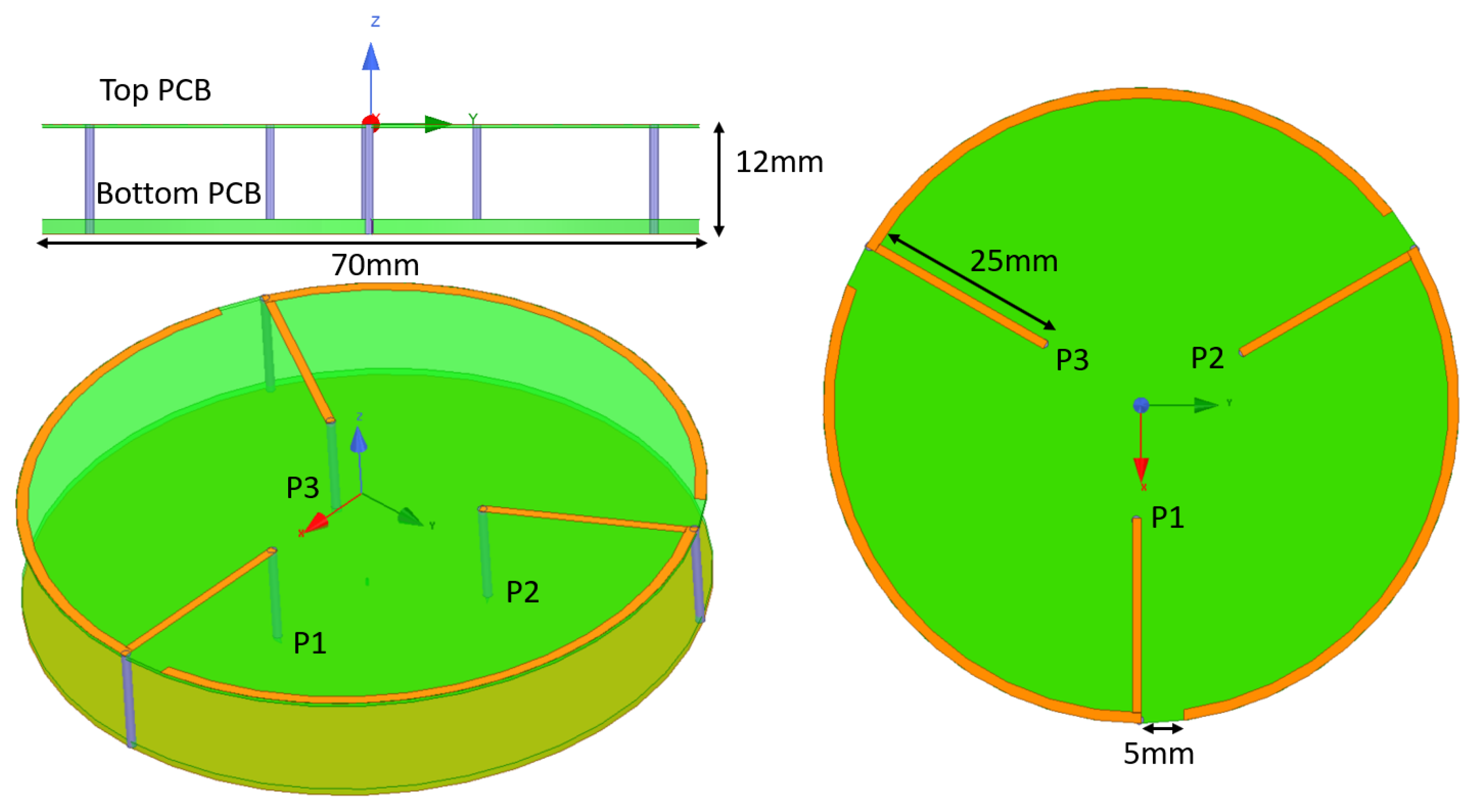
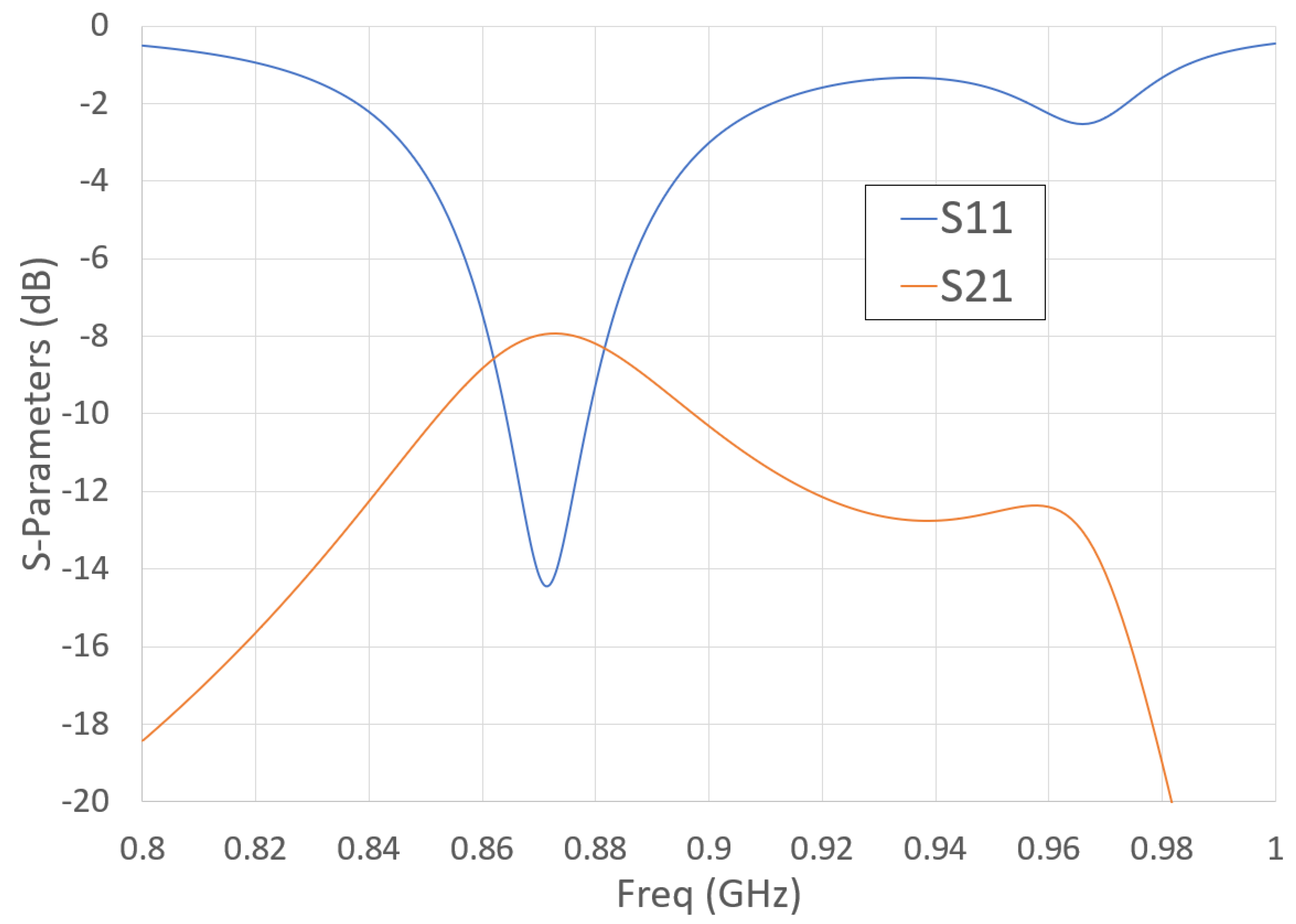
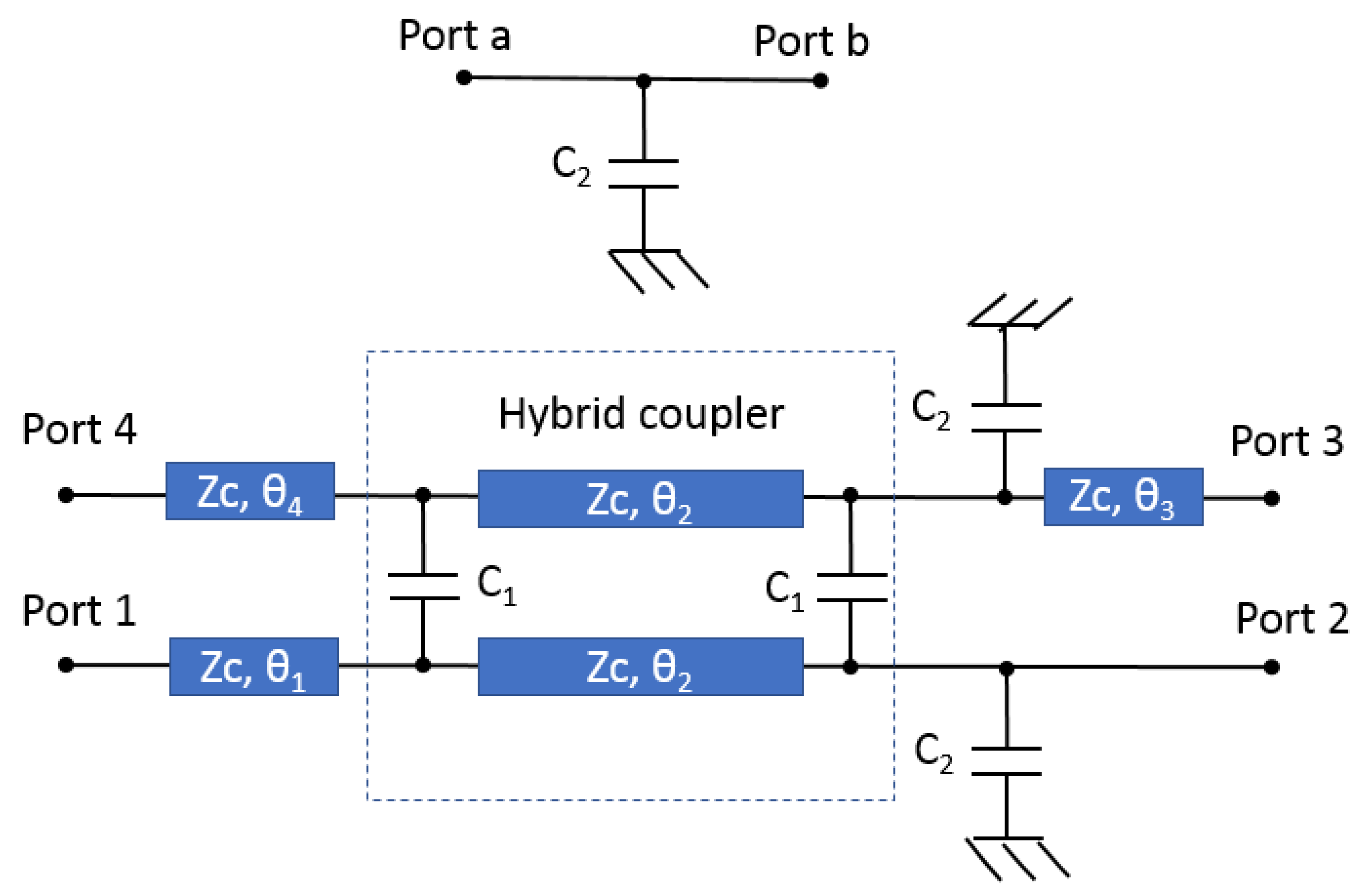
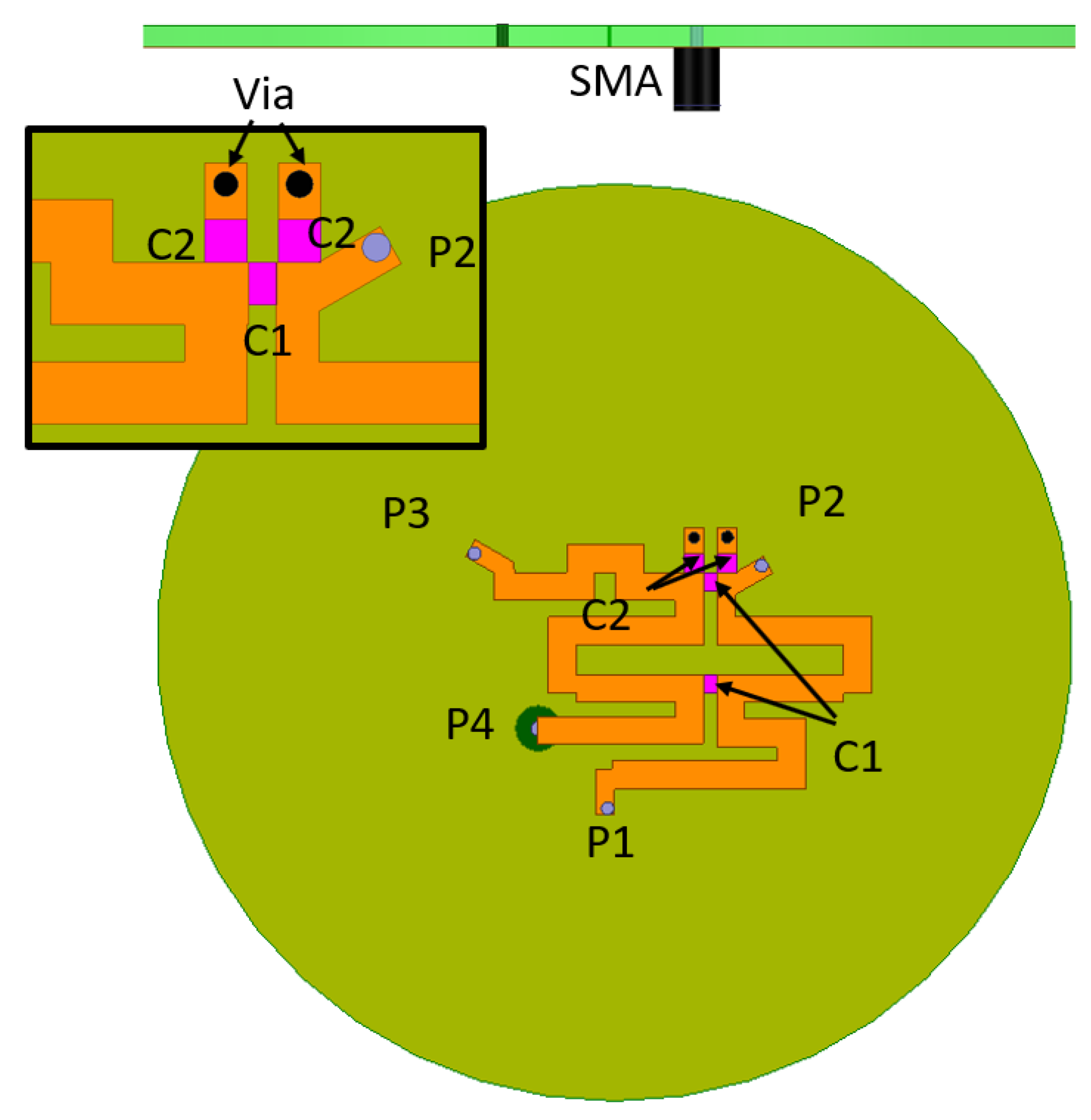


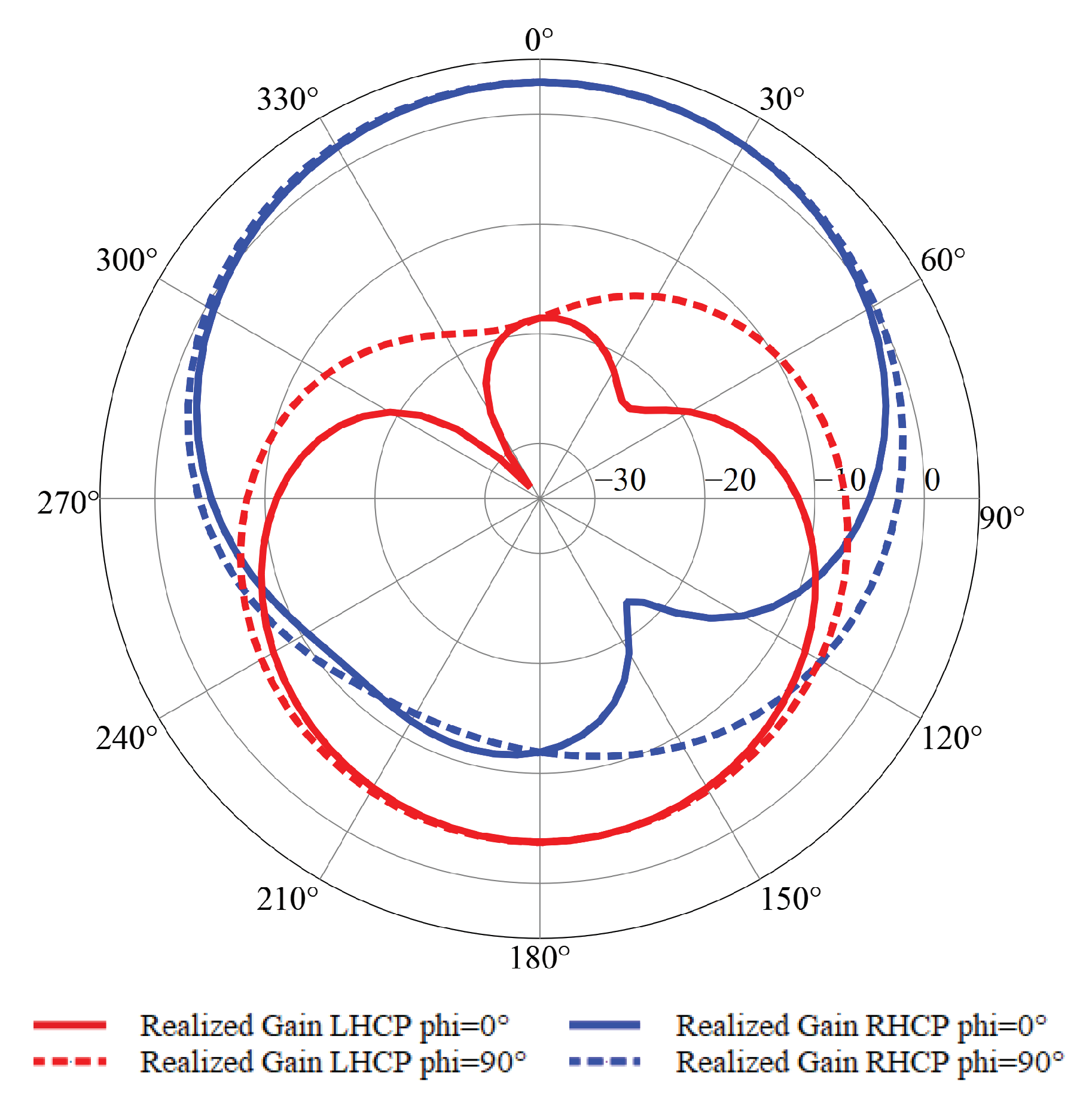



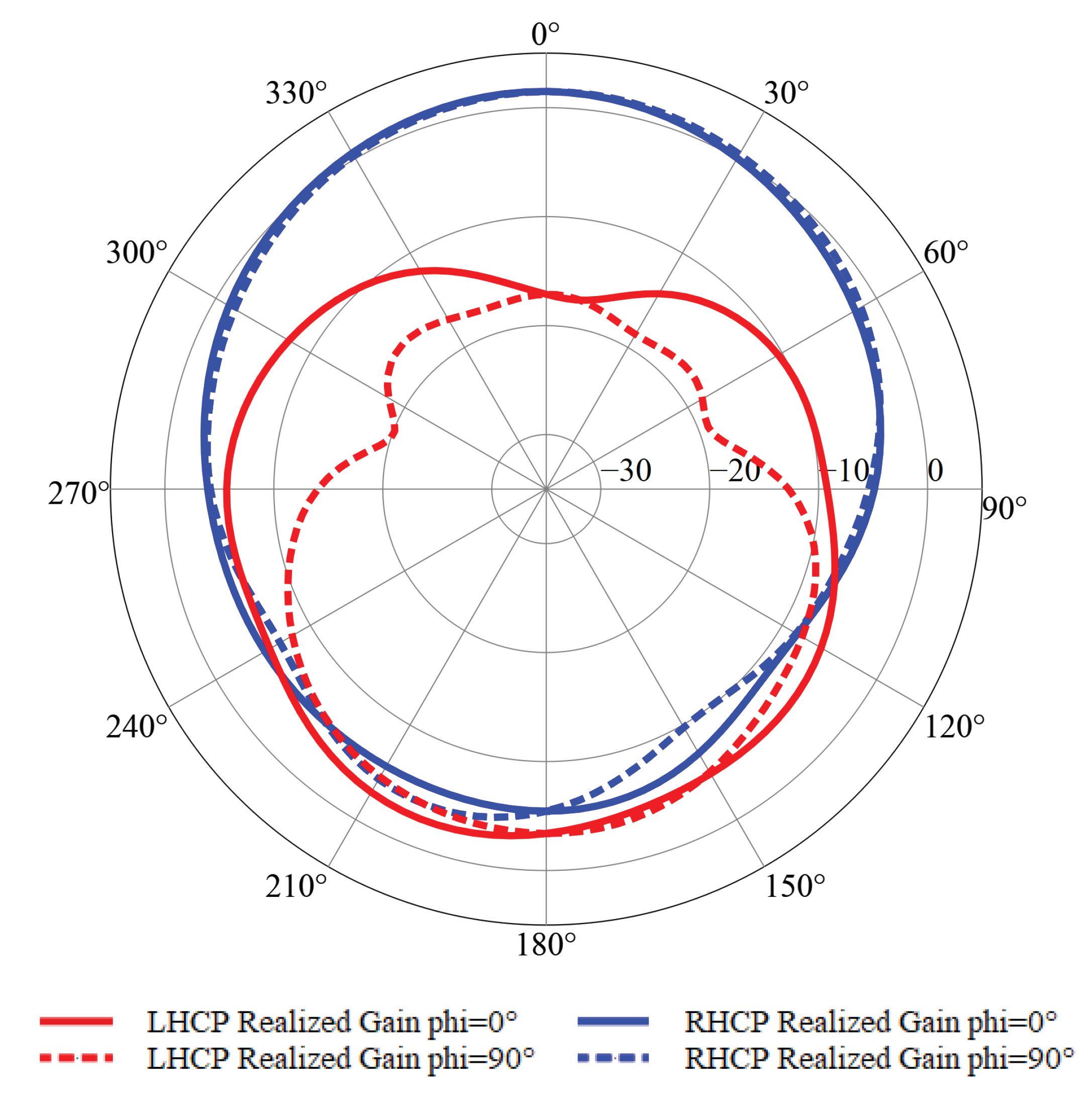
| Simulation Model | W/o Loss | tan = 0.02 & PEC | tan = 0.02 & Copper |
|---|---|---|---|
| Peak Total Directivity | 4.56 dBic | 4.56 dBi | 4.56 dBi |
| Peak Total IEEE Gain | 4.54 dBic | 3.88 dBi | 3.18 dBi |
| Peak Realized Total Gain | 4.51 dBic | 3.86 dBi | 3.16 dBi |
| Peak Realized RHCP Gain | 4.49 dBic | 3.84 dBic | 3.14 dBic |
| [12] | [13] | [14] | [15] | Proposal | |
|---|---|---|---|---|---|
| Max. Dimension * | 0.19 | 0.24 | 0.25 | 0.26 | 0.21 |
| Center Freq. in MHz | 919 | 866.5 | 915 | 915 | 868 |
| Substrate tan | 0.002 | 0.007 | 0.008 | 0.02 | 0.02 |
| Peak RHCP Gain in dBic | 2.2 | 2 | 2.4 | −0.6 | 3.14 |
| 3 dB RHCP Gain Freq. BW | 1.6% | N.A. | 2.8% | 2% | 5% |
| −3 dB Beamwidth | 150 | 120 | 120 | 85 | 117 |
© 2020 by the authors. Licensee MDPI, Basel, Switzerland. This article is an open access article distributed under the terms and conditions of the Creative Commons Attribution (CC BY) license (http://creativecommons.org/licenses/by/4.0/).
Share and Cite
Trinh, L.H.; Truong, N.V.; Ferrero, F. Low Cost Circularly Polarized Antenna for IoT Space Applications. Electronics 2020, 9, 1564. https://doi.org/10.3390/electronics9101564
Trinh LH, Truong NV, Ferrero F. Low Cost Circularly Polarized Antenna for IoT Space Applications. Electronics. 2020; 9(10):1564. https://doi.org/10.3390/electronics9101564
Chicago/Turabian StyleTrinh, Le Huy, Nguyen Vu Truong, and Fabien Ferrero. 2020. "Low Cost Circularly Polarized Antenna for IoT Space Applications" Electronics 9, no. 10: 1564. https://doi.org/10.3390/electronics9101564
APA StyleTrinh, L. H., Truong, N. V., & Ferrero, F. (2020). Low Cost Circularly Polarized Antenna for IoT Space Applications. Electronics, 9(10), 1564. https://doi.org/10.3390/electronics9101564






